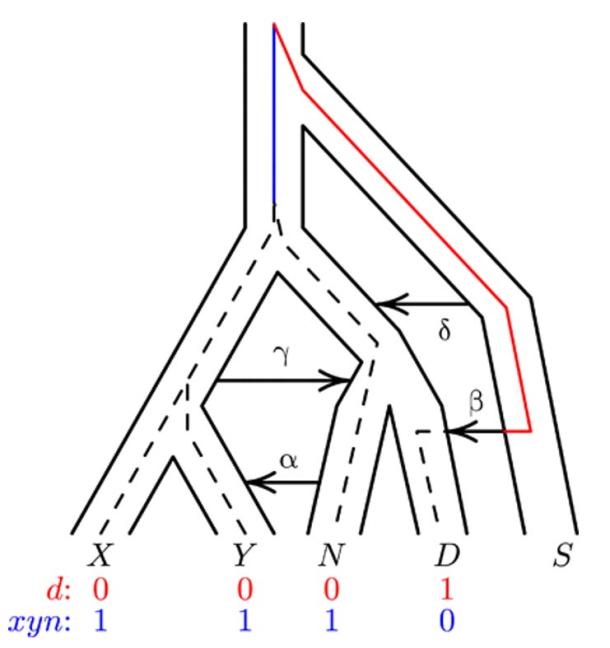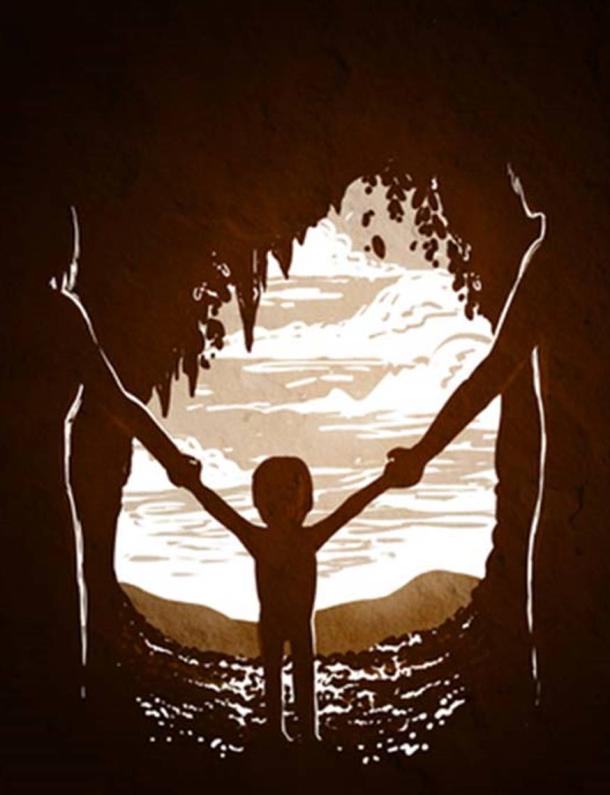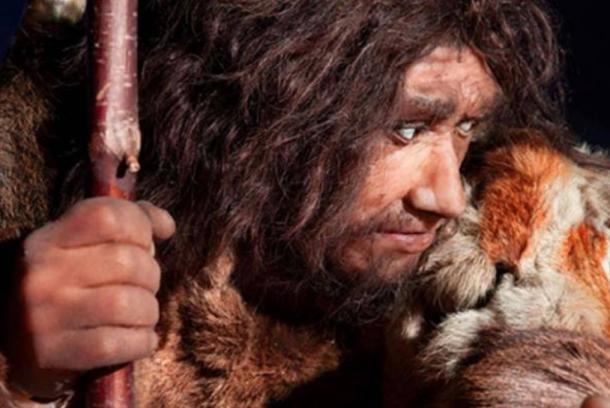
Super Archaic Humans Mixed with Unknown 'Ghost' Species
Do you remember those school science posters that depicted human evolution with a primate standing up and becoming a modern human? Of course you do, but you may not have noticed that these posters never showed any years - and that is because until this new scientific paper scientists were unclear about when, where, and how we mated our way out of Africa. But now, fossilized genes have demonstrated that some of our ancestors, referred to as “super archaic” humans, mated with Neanderthal and Denisovan ancestors, a long, long time ago.
Several new scientific studies have suggested the ancestors of all three groups had mixed at least twice and evidence has been provided of even older “ghost lineages,” from unknown extinct hominins. These new studies greatly lean on models of inheritance and population mixing, showing a confused pattern with the identities of our ancestors’ ancient mates remaining unknown, and precisely when and where these sexual encounters took place ‘was’ a long standing scientific mystery. Until now.
Super-Archaic Humans Got Down With Neanderthal-Denisovan Ancestors
In an article published on Science Mag computational biologist Murray Cox of Massey University of New Zealand, Turitea said that when interpreted together, as a whole, the new paper presents a strong case that before Homo erectus left Africa, as early as 1.8 million years ago, they were interbreeding with different groups. Furthermore, long after they had spread around the world they mated with later waves of human ancestors leaving Africa.
Anthropologist Alan Rogers of the University of Utah has spent three years trying to solve the mystery of human evolution by compiling a detailed comparative analysis of DNA strands from ancient hominins which highlights genetic mutations and shared genes in ancient human populations. Dr. Rogers’ 2017 study proved that two lineages of ancient humans, “Neanderthals and Denisovans,” had separated much earlier than previously thought and he proposed a bottleneck in population sizes had occurred; but anthropologists Mafessoni and Prüfer published a paper on PNAS with different results.
- Research Suggests that Monogamy Took Hold Due to Sexually Transmitted Diseases
- March of the Denisovans: Evidence of Archaic Human Gene Now Detected In the Orient
- Ancient Human Smile Used as an Effective ‘Get-Sex’ Tool

A population network including four episodes of gene flow, with an embedded gene genealogy. (Rogers, Harris, and Achenbach) Upper case letters ( X, Y, N, D, and S) represent populations (Africa, Europe, Neanderthal, Denisovan, and superarchaic). Greek letters label episodes of admixture.
Rogers conceded that neither study had explained the genetic data satisfactorily and both methods were missing something essential, but his new study has now solved the problem. The new paper was published on Feb. 20, 2020 in the journal Science Advances and demonstrates the earliest known interbreeding event in Eurasia between ancient human populations known as the “super-archaics” with a Neanderthal-Denisovan ancestor – occurred about “700,000 years ago.”

Reconstruction of Homo rhodesiensis based on the Broken Hill cranium, by Élisabeth Daynès (2010), Museum of Human Evolution, Burgos. (CCO)
Anthropological Challenges
Applying a new method for analyzing ancient DNA Dr. Rogers’ latest paper proves a mating event occurred between two populations that were “more distantly related than any other ever recorded,” and that scientists never knew about this early episode of interbreeding. Four proposed episodes of gene flow point to the hitherto unknown event some 744,372 years ago, suggesting interbreeding had taken place between super-archaics and Neanderthal-Denisovan ancestors “in Eurasia,” which suggests the timeline for humans migrating out of Africa and into Eurasia needs revision.
It is known that modern humans and Neanderthals had been separated for about 750,000 years when they started interbreeding and the super-archaics and Neanderthal-Denisovan ancestors were separated for well over a million years. These new findings, about the timing at which interbreeding happened in the human lineage, informs about how long it takes “for reproductive isolation to evolve,” said Rogers.

Drawing of a Neandertal mother and a Denisovan father with their child, a girl, at Denisova Cave in Russia. (Petra Korlević)
Our Dangerous Genetic Situation
Studying genomes, the team of genetic scientists estimated that the super-archaic separated into its own species about two million years ago, which is supported with human fossil evidence in Eurasia that dates to 1.85 million years old. Nathan S. Harris and Alan A. Achenbach from the Department of Anthropology at the University of Utah, who also contributed to the study, said the first two human migrations into Eurasia occurred about two million years ago when the super-archaics migrated into Eurasia and subsequently expanded into a large population.
- Modern Humans Could Have Mated With Denisovans as Recently as 15,000 Years Ago
- Prehistoric Humans are Likely to Have Formed Mating Networks to Avoid Inbreeding
- How Ancient Hominid Interbreeding has Shaped Humans Today
It was about 700,000 years ago that Neanderthal-Denisovan ancestors migrated into Eurasia and began interbreeding with descendants of super-archaics and modern humans, who only expanded to Eurasia 50,000 years ago and bred with the Neanderthals.

Neanderthal. (procy_ab / Adobe Stock)
All of these diverse and varied breeding patterns that you have just read about cannot ever happen again, as today Homo sapiens are the only humans on the planet and even if we fancied a try, there are no other mating options. This, according to geneticist Carina Schlebusch of Uppsala University, is not a healthy situation - we have such a large densely spread species with so little genetic diversity, which she says “is a dangerous situation”.
Top Image: Ancient couple. Credit: Kovalenko I / Adobe Stock
By Ashley Cowie
















Comments
It appears that the goldilocks theory is not getting much of a look in. The idea that humans could have evolved at the same time as in Africa is ruthlessly suppressed, except in various centres of learning in Western Europe. Although most of the evidence for hominim evolution is found in Africa, the fact that modern African populations don't appear to have any Neanderthal genes, but everyone else on the planet has.
It is just a matter of finding evidence elsewhere, and much of suitable site potential is deep under water. I do not object to having African genes, but I just think it is more likely that humans originated in many places, and not just on the African continent. The multiplicity of hominims in Africa suggest that this is very likely to be the case.
The fact that Gorillas, Oran Utangs and Chimpanzees can communicate by sign language reinforces this.